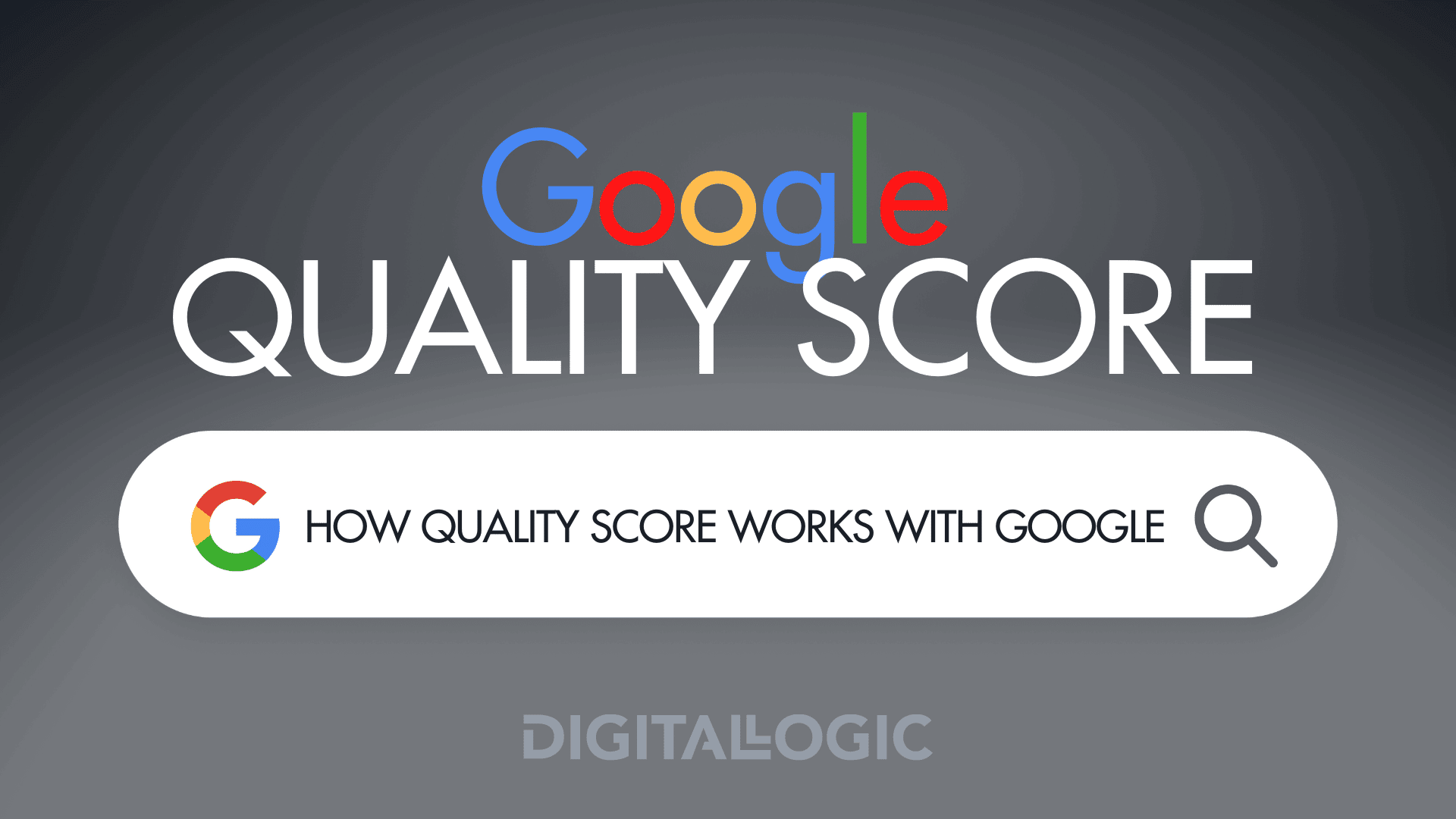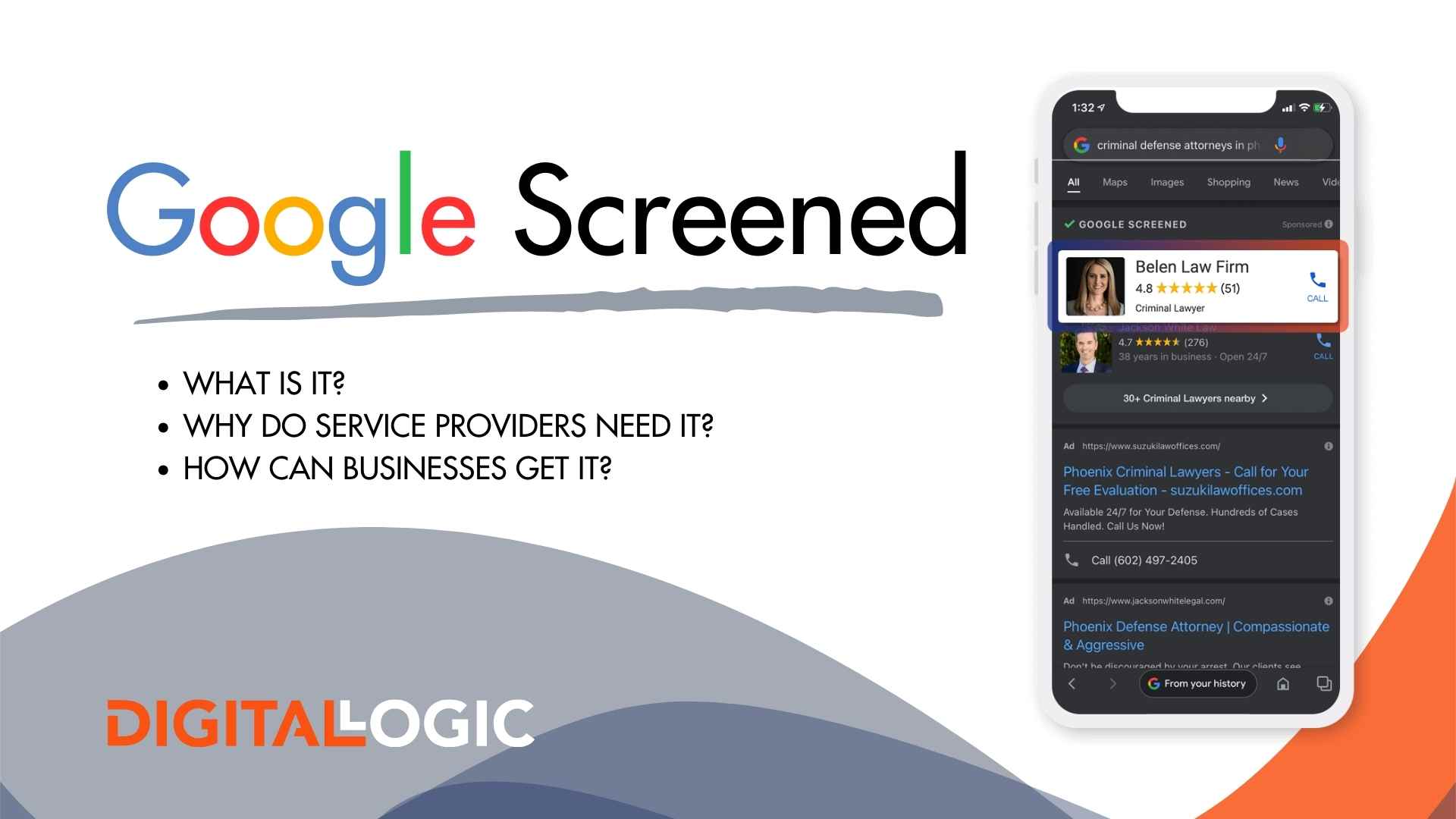Google’s Quality Score
Google Quality Score is a very important component for the keywords in a Google Ads account. Mand advertisers don’t even know what’s happening behind the scenes with Google Quality Scores. We’ve made a guide to help you learn more about Quality Score.
What is Google Keyword Quality Score?
Google Keyword Quality Score is a rating that Google gives to every keyword in Google Ads. This rating plays a massive role in the effectiveness & cost of your managed pay per click campaign.
Keyword Quality Score is a score of 1 to 10, with 1 being the lowest, and 10 being the highest score.
This digital marketing metric is one of the most important numbers to keep track of when running a search campaign with Google Ads. A good quality score can save you thousands of dollars throughout the course of a campaign.
Keyword Quality Score measures the performance of search queries that exactly match your keyword. Keyword Quality Score is the same for any specific keyword, no matter which match-type you choose.
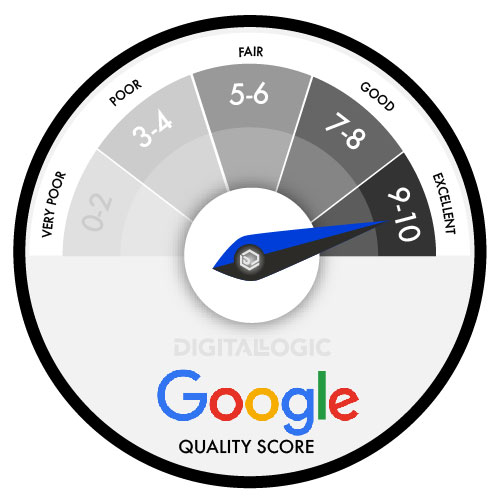
Where Can I Find My Google Ads Quality Score?
You can find your Keyword Quality Score in the Google Ads platform under the “Modify Columns” area.
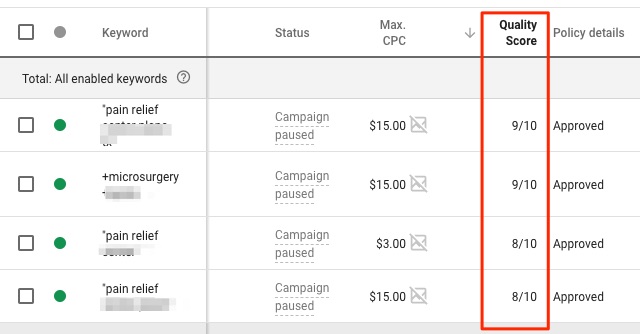
How Is The Google Ads Quality Score Calculated?
Keyword Quality Score calculates the relevancy of ads based on the landing page or URL associated with the particular keyword used. After a keyword receives impressions, Keyword Quality Score will display how well it performs.
If you have several keywords in your Google Ads reporting tool or interface with low impressions, then you’re probably not getting enough feedback. Keywords with no Quality Score don’t have enough traffic or queries to be rated using the standard Quality Score formula.
When examining your Keyword’s Quality Score in your Google Ads account, you’ll be able to view the following:
- Quality Score: How relevant each keyword, ads, and landing pages are to viewers.
- Ad Relevance: How relevant the keywords are to the ad copy in a campaign.
- Landing Page Experience: How useful a landing page appears to viewers of the page.
- Expected CTR: Compared with past performance, how often an ad gets clicked when shown to a user.
A diagram on the Google Quality Score Factors and how it’s calculated:
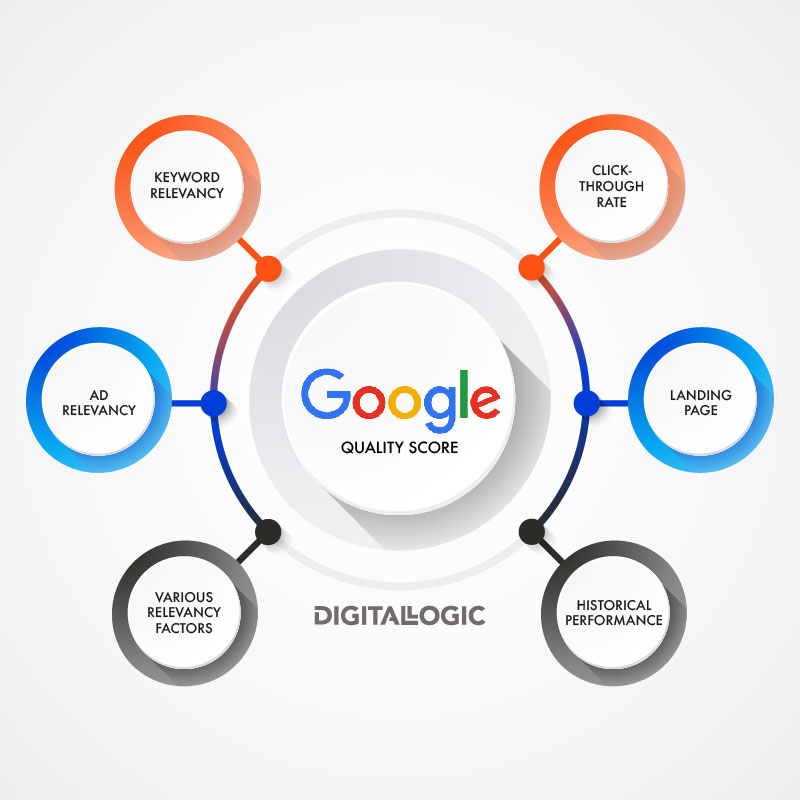
Why Google Quality Score Is Important for Ad Rank
[Top Ads vs. Lower Ad placement]
Cost of Google Ads
Quality Score is important to measure how relevant your ads are to the users’ search queries.
Highly relevant keywords in your ad text will typically produce a high quality score while irrelevant keywords in your ad text will produce a poor quality score.
Google Quality Score ensures users are viewing ads that are relevant to their search. It ensures that highly relevant content will win over irrelevant content for ads using the same keyword or closely related keywords.
This is Google’s way of providing the best search engine results possible.
Additionally, the quality score will affect how much Google Ads cost.
A higher quality score means a lower CPC. And, the lower your cost, the higher your ROI.
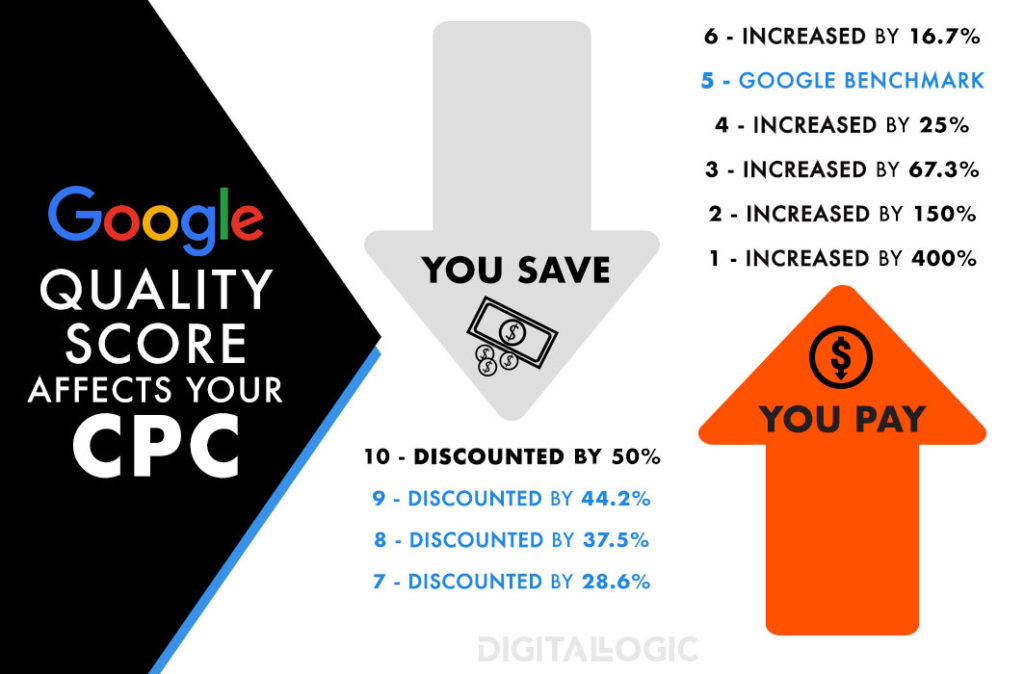
Ad Rank
Google Quality Score is an important metric that determines if a keyword is eligible to bid and whether your ad will even show up for search terms on Google Search. Google Quality Score, along with your CPC bid, will determine your ad’s rank.
This is very important for advertisers with a limited ad budget.
Ad Rank Formula for Google Search Network
The ad ranking formula for the Search Network is: CPC bid × Quality Score = Ad Rank
Google Quality Score is a primary factor in determining your ad’s ranking. Small budget advertisers need to optimize accounts to get into the top ad positions. Even if the CPC bid is lower than a competitor’s bid but has a higher Quality Score.
Ad Rank Formula for Google Display Network
Google Quality Score also affects ad placement for Google Display Network campaigns.
The ranking formula of keyword-targeted ads is: Display Network bid × Quality Score = Ad Rank
Placement-Targeted Ads Formula
Google will consider your bid for placement-targeted advertisements within the Display Network. It will use either the ad group or for individual placements, along with your Ad Group Quality Score.
The ranking formula for placement-targeted ads is: Bid × Quality Score = Ad Rank
Account Level Quality Score
Google Quality Score will affect your account health and success with Google Ads. If your Keyword Quality Score is too low, then your keyword might not even enter an auction. This means that your ad will not show or be able to compete for a Google searcher’s business.
If your Google Quality Score is low, then your ad position will be low, meaning less traffic to your site and a lower ROI.
Need to calculate CPM instead: Formula to Calculate CPM
How To Improve Quality Score
In order to determine how to improve quality score, you first need to understand the main reasons why your quality score column will drop.
Reasons Why Your Google Ads Quality Score Drops
Here are some of the common reasons for a low Google Quality Score.
Use this short checklist if you’re trying to improve a low score or if you’re aiming for a high quality score:
- Review your destination URLs. Have you made any recent changes to those pages? Are any of your destination URLs old or broken? Will your links lead to high-quality landing pages that are ad relevant?
- Replace forward slashes (/) or backward slashes (\) with a space or a dash.
- Commas should be replaced with a blank space or dash.
- Replace ampersands with a blank space or dash.
- Check your landing page load time in Google Webmaster Tools or Google Analytics. If your landing page's load time is above three seconds, then it will hurt your score.
- Rewrite any ads with a low click-through rate. Google's expected clickthrough rate begins at 1.5%, so anything under that should be rewritten.
- Make sure that you use at least 3 extended text ads in each of your ad groups.
- Make sure the highest performing keywords are being used in your ad groups.
- Incorporate some Dynamic Keyword Insertion (DKI) ads to boost your click-through rate.
- Perform a full account audit and apply changes where needed to boost performance.
- Pause any keywords with few or no conversions, as well as those with a CTR below 1.5%.
- Break your campaign up into smaller, more tightly themed ad groups.
- Target your landing pages based on ad relevance.
Keywords have an initial Google Quality Score based on the account’s historical performance within Google’s search results. New keywords display a unique Google Quality Score after reaching the impression threshold.
If you are only using a phrase or exact match, then you’ll want to consider adding some broad match keywords. This will help keywords reach the impression threshold. Then, they’ll begin accruing their own unique Keyword Quality Score.
Need help in Google Analytics? Check out our Google Analytics Walkthrough
Other Types Of Google Quality Scores
Advertisement Quality Score
[Combination of scores]
Each of your ads have different click-through rates (CTR). CTR is a major factor for determining Advertisement Quality Score.
If you have a bunch of low CTR ads in your ad groups, then they’ll contribute to a lower Google Quality Score.
Advertisement Quality Score determines if your ad extensions will show up. Use competitive bids to take advantage of ad extensions to boost click-through rate.
Receive a CTR boost by including Dynamic Keyword Insertion (DKI) ads in your campaigns. DKI ads show a user’s exact search query within your ad copy, as long as it doesn’t exceed the ad character limit. You need to be careful when using these ads. Search advertisers will see that it’s more likely the DKI ad will receive a viewer’s click because it exactly matches what the viewer typed.
Ad Group Quality Score
[Adding up KW quality scores to get Ad Group Score]
Ad Group Quality Score determines which areas will enhance your campaign’s performance. Ad Group Score is not available to you on the Ad Groups section.
It is actually an average of all keyword quality scores in each ad group.
If you have many low Keyword Quality Scores in an ad group, the average score could be 7. Compare with an ad group that has an average score of 4, and you’ll get a good picture of where to focus your efforts first.
Improving your lowest Quality Scores will help you achieve a better ROI for your ad campaigns.
Advertisers should focus on ways to restructure existing campaigns and ad groups. This can improve any lower CTR ads, to boost Ad Group Quality Score.
Restructuring your ad groups is a great way to improve your account structure. This is because your visible history recalculates after moving things around. The historical data for your Google Quality Score is still and applied.
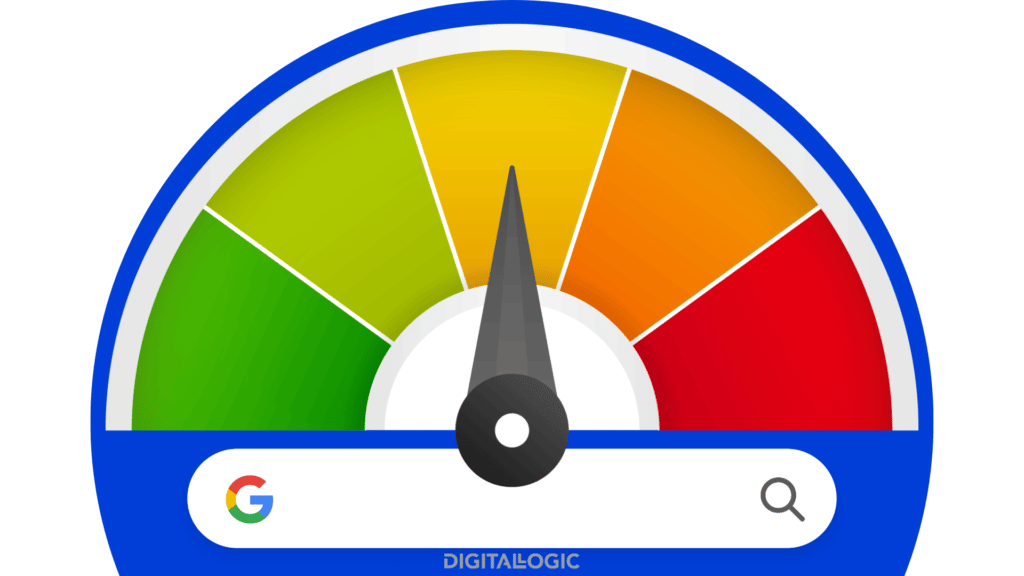
Landing Page Quality Score
Landing Page Quality Score revolves around having relevant and original page content. Transparency, also known as “spider-ability”, and ease of navigation is important, too.
Google wants advertisers to make high-quality websites that its users will find useful. In fact, this is one of the main reasons why Google is the biggest search engine in the world. Creating a good landing page will help turn traffic into customers and maximize ROI.
Google Ads tells you if there’s a problem with your landing pages. This will display if you hover over the speech bubble of a Keyword Quality Score.
Google hasn’t actually confirmed that there is a Landing Page Quality Score. The quality of your landing pages is an observed factor for your Keyword Quality Score.
Your landing pages are also evaluated by real people at Google. This process happens more than once. Update landing pages until you get the desired results for your Google Quality Score.
Display Network Quality Score
[Calculation CPM vs CPC]
Display Network Quality Score is a different score than for Google Search Network.
Google Ads evaluates your historical performance on the websites you’re eligible for. This is then compared with other similar websites. The relevance of your ads and keywords to your landing page are important. So is the quality of landing pages when calculating Display Network’s Quality Score.
Additionally, Google Display Network offers different bidding options than the Search Network. The contributing factors for Display Network Quality Score depend on the bidding method.
If your ad campaign is using a cost-per-mille (CPM) model, your Google Quality Score uses the Landing Page Quality Score. If your ad campaign uses cost-per-click (CPC) bidding, it relies on historical CTR and Landing Page Quality Score
By testing different ad types, you can improve your Display Network Quality Score. You may discover that image ads will perform better on certain websites.
You should use each in case a site doesn’t allow you to use images for placement.
The more options you provide and the more tests you run, the greater your expected CTR should be.
The Google Display Network is a different beast. Target ads for appropriate sites and demographics using tools available in Google Ads. It’s recommended to separate your Search Network campaigns from your Display Network campaigns. This will help you better manage them.
Mobile Ad Quality Score
[Mobile Ad vs Desktop score]
Google calculates Mobile Ad Quality Score the same way as Desktop Quality Score. It doesn’t matter which device platform you view on. The system uses the distance between the user and the business for Mobile Ad Scores. It works by incorporating the device location and location extensions settings.
Mobile devices treat ads the same way by calculating a Google Quality Score. Your ad will have a different Quality Score for both its mobile and desktop viewers. This is because the landing page experience is different on mobile.
Separate campaigns so your mobile ads are separate from desktop ads. You will see a change in your Google Quality Score in either campaign after the migration. This happens even though nothing else has changed within the ad campaign.
Google Account Quality Score
[Google Account History]
Google Account Quality Score is the result of performance using all account history. This includes all the keywords and advertisements.
Google doesn’t actually confirm the existence of this Account Quality Score. And, there are several layers of Google Quality Score besides Keyword Quality Score.
Don’t choose a lot of low-Quality Score keywords.
If there are low CTR ads with poor performance in your account’s history, your account’s Quality Score will be low. This will cost you more throughout the course of your ad campaign.
Google Account Quality Score suggests that Google carries favoritism for older accounts. When compared with new ones, that does make sense.
If your account has a history of good performance, performance will be better than a new user’s campaign. It could take months of successful campaigns to see a boost in low performing accounts. It might be tempting to create a brand new Google Ads account. But starting over is actually against the Google Ads policy.
You will need to work within your existing account to restructure efforts. Abide by the keyword, ad group, and landing page relevance guidelines. These rules are outlined by Google.
Most advertisers argue how they handle dealing with low Google Quality Score keywords.
Some of them claim that you should delete ads as soon as it’s clear that they won’t perform well. Others might claim that you should pause them until you can figure out how to improve their Quality Score.
Both options will help with low scoring keywords.
They won’t collect data or affect your Google Account Quality Score after they’ve been paused or removed. You need to consider how much search volume and traffic these keywords have generated before you make a final decision to delete your hard work.
If you choose to delete keywords from your account, the system may have problems turning those keywords back on later. Google would consider them as duplicates to your original campaign.
Common Misconceptions About Google Quality Scores
Changing Match Types Will Affect Your Google Quality Score
Google measures your Quality Scores without even considering the keyword match type. Broad, phrase and exact match of any keyword will have the same Google Quality Score. Google determines Keyword Quality Score from the exact match phrase within a search. Broad match for “red slippers” will have the same Quality Score as the exact match for “red slippers.”
Pausing Ads or Keywords Lowers Google Quality Scores
Pausing your ads or keywords on Google doesn’t affect their Quality Scores. It is a metric based on how well your keywords and ads are performing. If your ads aren’t active and don’t enter an auction, then there won’t be a Google Quality Score to calculate.
Display Network And Search Network Quality Scores Have An Impact On Each Other
As explained above, each of these Quality Scores are separate and won’t affect each other. The criteria for calculating each of these Quality Scores are different. Google Search and Display are so different that it’s impossible for them to apply to one another.
A Higher Search Position Will Help Your Google Quality Score
On the surface, this might seem like it would be true. Google Quality Score is actually adjusted when compensating for differences in ad positions. Google knows higher positions generate a higher CTR than the lower search positions. Metrics adjust the formula to break up the reverb effect from higher positions.
Improve Your Quality Scores By Working With Professional Advertisers
Achieving great quality scores, and therefore a great return on investment, requires a high level of experience and campaign personalization. And, while sure, Google does offer keyword and ad personalization tools, there truly isn’t a comparable solution to working with a professional AdWords management company.
Digital Logic has some of the best PPC consultants there are. We offer SEO and SEM services, as well as local ad services and remarketing services to grow small businesses!
At Digital Logic, we offer completely transparent billing and guarantee a better return on investment before we accept you as a client. If we can’t do better than your current or previous marketing company, then we’ll tell you that, as well.
Digital Logic is a Shreveport-based company that works with both local and national level businesses!
Let’s work together.
Let us know how we can help grow your business.
